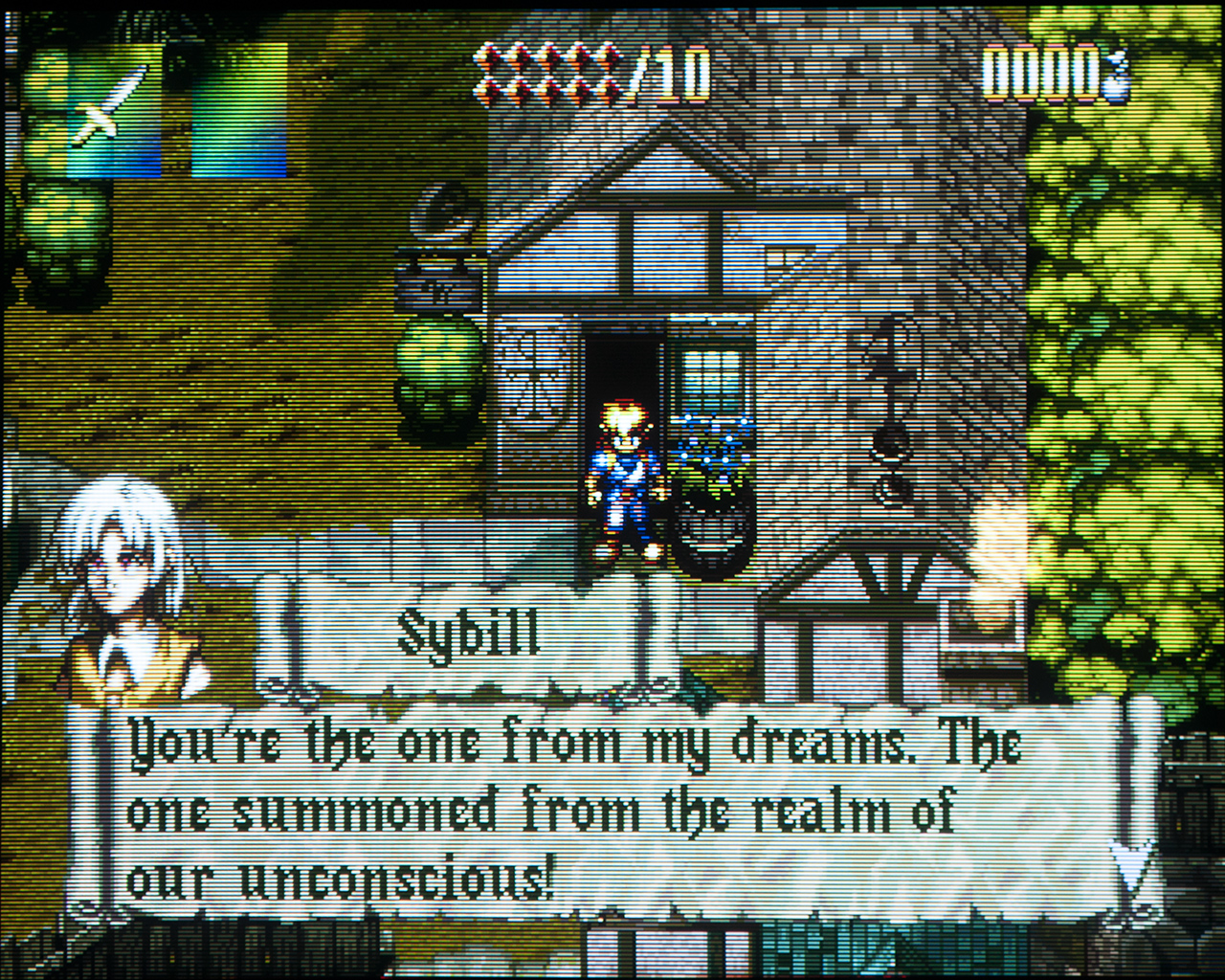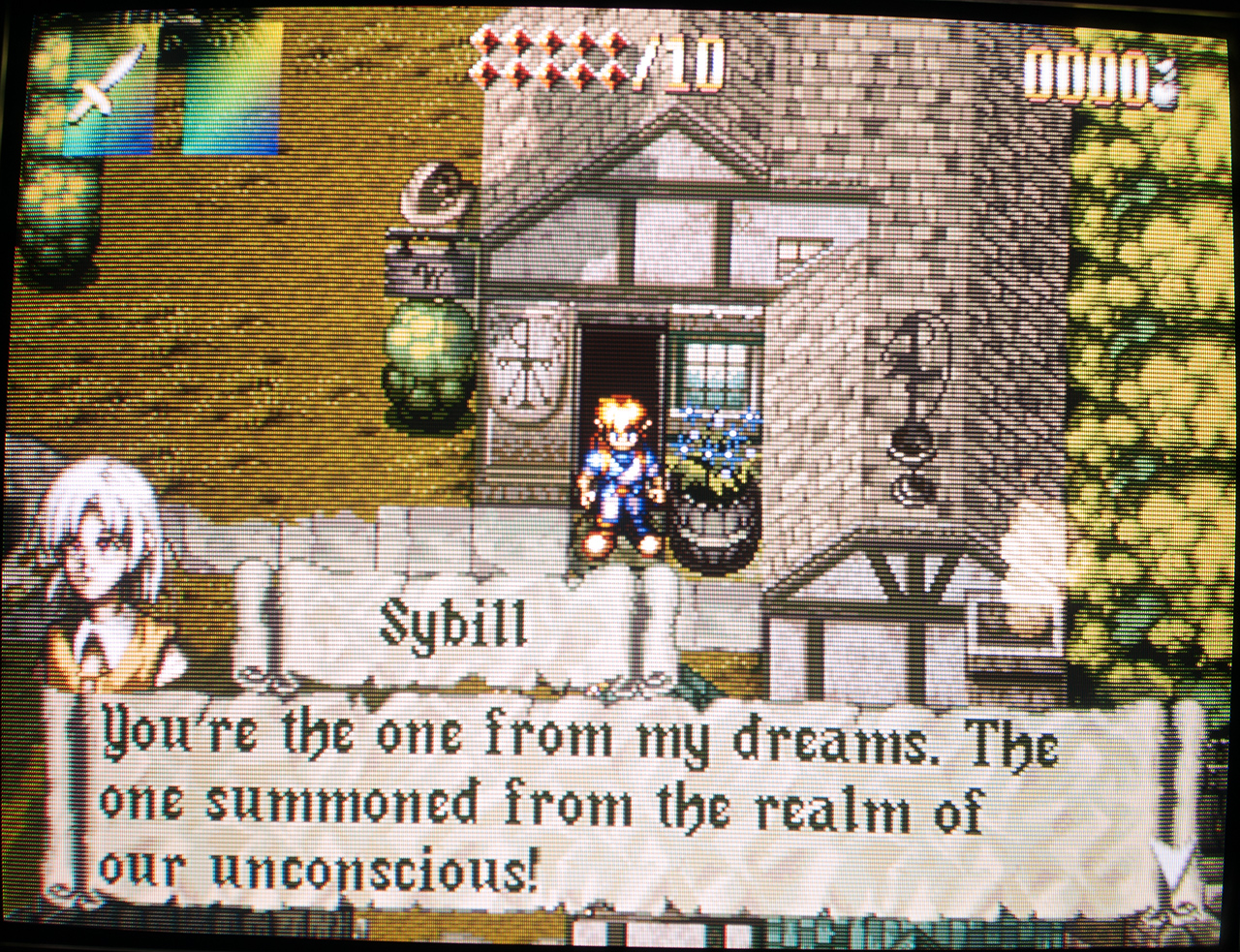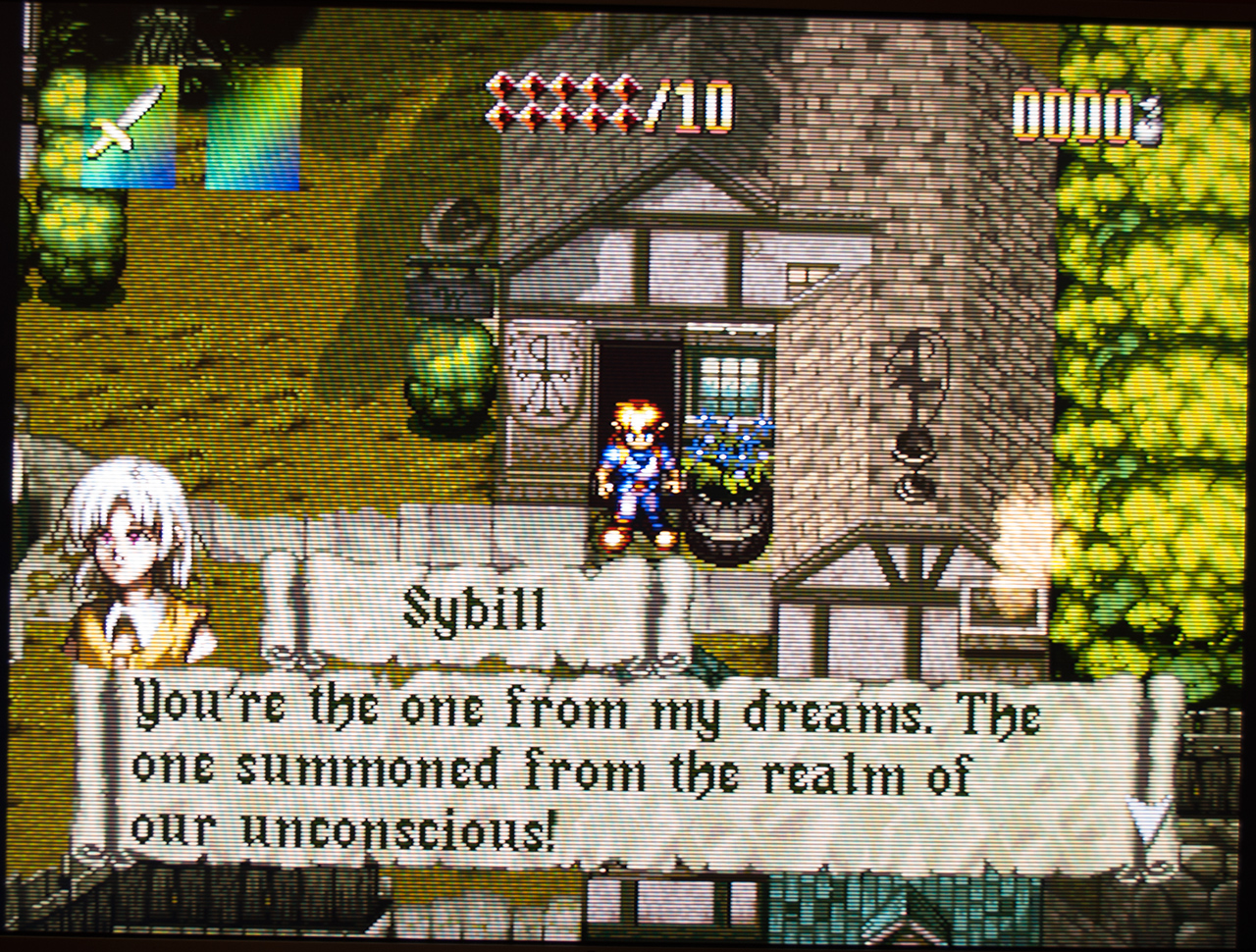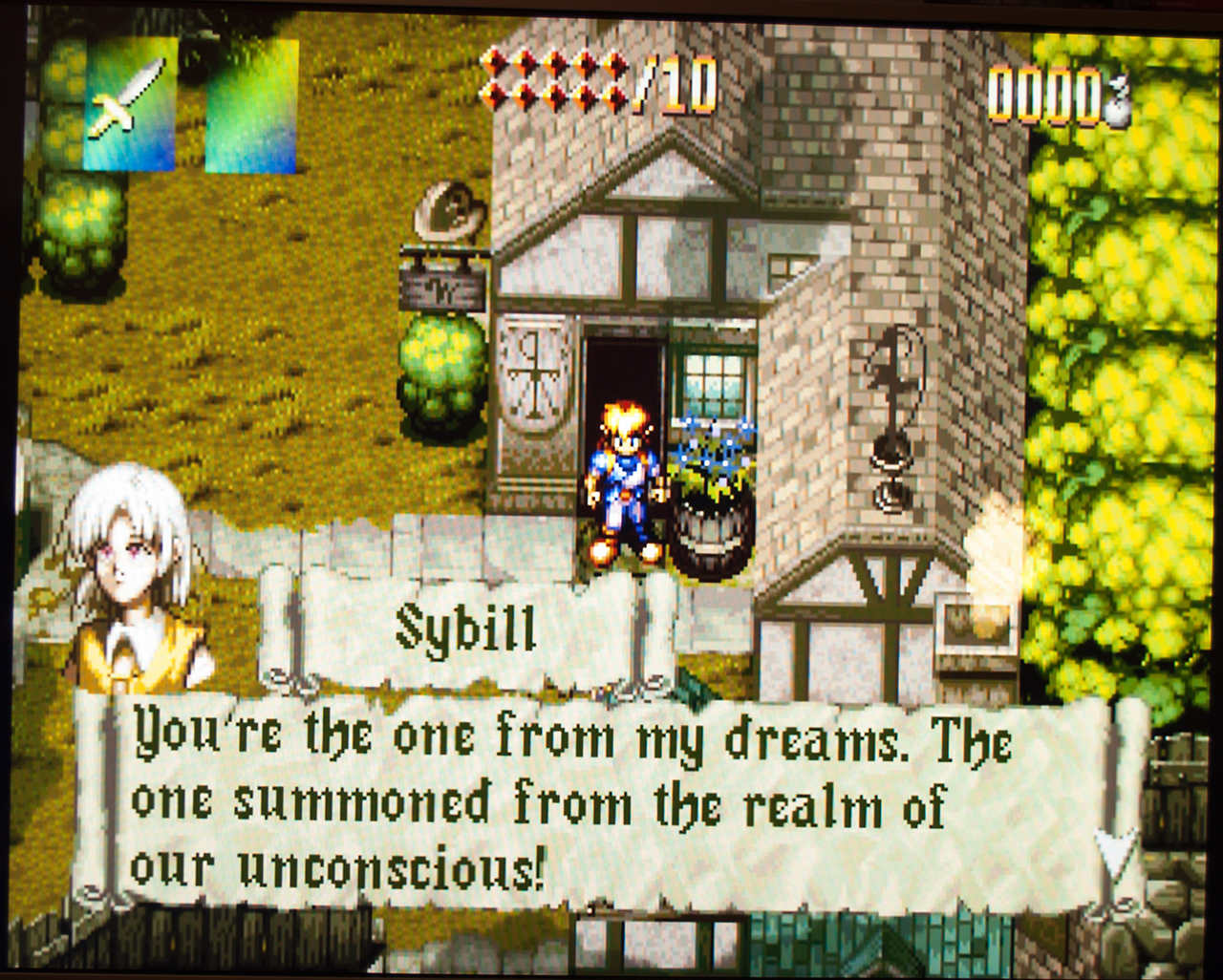Now let's check out what the picture of the BVM looks like in comparison to the other two TVs I have.
First comparison is from the game Alundra (Playstation 1).
Picture 1: PS1 connected to the Sony BVM-D32E1WE
Picture 2: PS1 connected to a Philips 28PT4458/01 (28 inch CRT TV from 2006)
Picture 3: PS1 emulated through Retroarch with CRT shader Hyllian Multipass on a Panasonic TX-L42ETW60 (42 inch LED/LCD TV from 2013)
Picture 4: PS1 connected to the same Panasonic TX-L42ETW60




For easier direct comparison, use this slider:
The BVM picture turned out really well, didn't it? It looks almost like an emulator screenshot.
Well, I think you can see pretty clearly that the Philips TV is curved and the BVM is flat.
The Philips TV also has very warm colors. And there is nothing you can do about it, the only things you can adjust on it are brightness, contrast, saturation and sharpness.
The picture is also only perfectly sharp in the center of the screen. The corners are less sharp, mostly because of bad convergence.
The BVM has the same sharpness all over the screen. Or at least for a 4:3 image like here. When you adjust the convergence for a 16:9 mode on it, you have to get really close to the screen, and you can see that the sharpness at the left and right side of the screen is not 100% perfect. But at normal viewing distance this is not noticable on the BVM, on the Philips it is.
As you would expect, the scanlines/blanklines are more clearly distinguishable on the BVM. But it's not a world of a difference.
As for the Panasonic, connecting old consoles directly to it works of course, but the image is pretty bad. It looks quite decent for static images, but it's awful in motion. It seems to turn the 240p image into an interlaced image and then deinterlaces it.
The photo that shows the emulator with CRT shader looks really good I must say (aside from the moiree effect). It looks like a mix of a professional video monitor and a consumer grade TV. But if you see it in person, it looks significantly less sharp than both of the CRTs I have.
To make it look more like a CRT I put the TV into dynamic mode. It applies edge enhancement in this mode and the backlight is at maximum (the blacks don't look like real black anymore as a result).
About the choice of shaders, out of the shaders I tried CRT Royale Kurozumi Edition shader looks best, but my PC is not fast enough for it. It's only usable when emulating consoles like the NES. For more advanced systems I'm using Hyllian Multipass, it looks almost the same but is much faster.